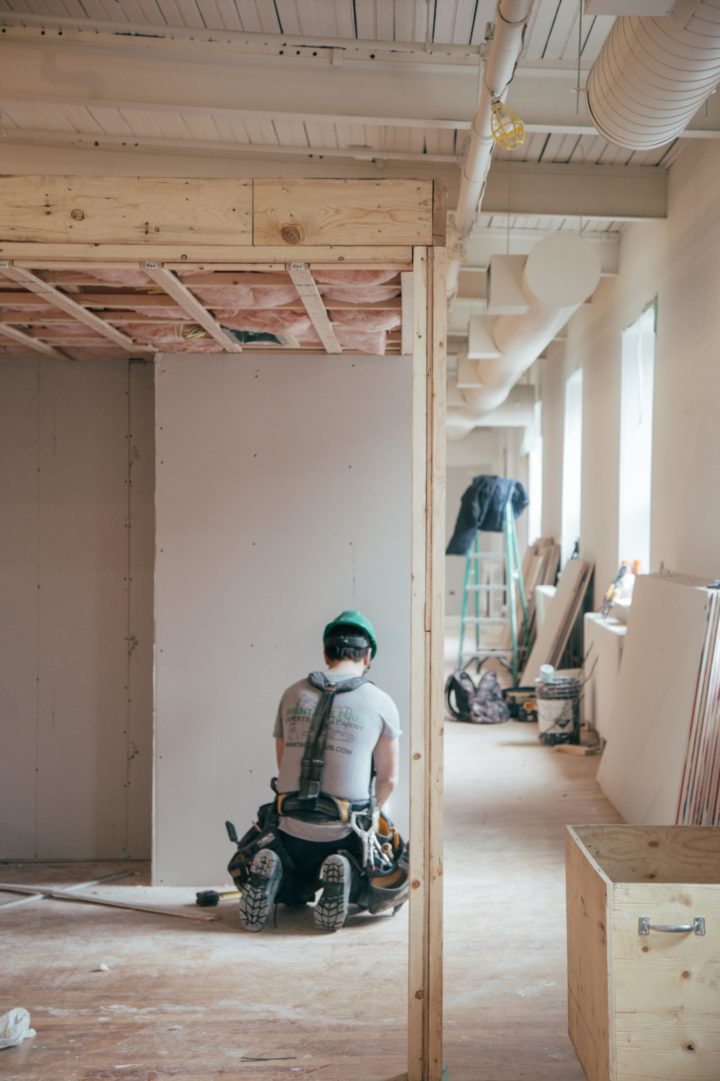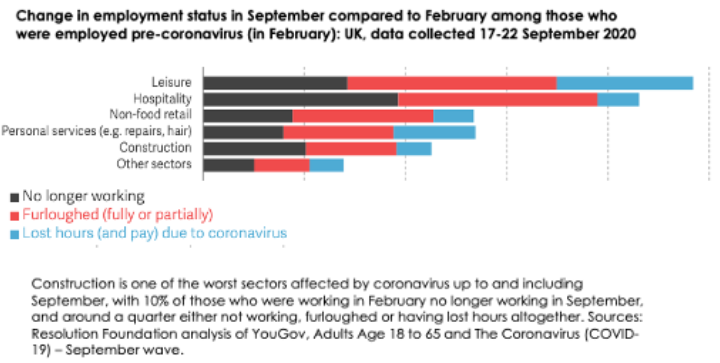Rebooting the Green Homes Grant
The Spending Review offers an opportunity to revamp and improve the scheme, which has so far flopped.

By Jess Ralston
@jessralston2Share
Last updated:
The second lockdown has likely stopped the Green Homes Grant – the headline climate policy announced by the Chancellor this summer – in its tracks.
The £2bn scheme, which the Government expects to support 100,000 jobs in the hard-hit construction sector got off to a slow start, spawning numerous calls to modify the policy so that more homeowners can take part.
Limited uptake from contractors, blamed on the necessity to complete works before March, has led to estimations that around half of the cash will be unspent. A sure-fire temporary reduction in interest as we enter lockdown again will likely see this diminish further.
There is a widespread consensus that the Green Homes Grant needs prolonging in order to be effective, prompting Labour calls for an 18-month extension. Accompanying these calls are signals from the Government that the grant is only a stepping stone to making the nation’s housing stock net-zero ready.
All eyes, therefore, are set on the Chancellor’s Comprehensive Spending Review, due later this month.
Spend, spend, spend?
When announced back in the summer, initial signs were positive. The Green Homes Grant represents an increase on the annual spend on building efficiency pledged in last year’s Tory manifesto. £2bn over six months dwarfs the c.£850m annual outlay from 2019-24.
Assessing climate action by Government spending alone is a depressingly common occurrence, and one that misses the tens of billions of pounds of private capital flowing into clean energy, electric vehicles and industrial advancements.
However, in the case of housing, Government spend is (for now) one of the main metrics of ambition. This uptick is a signal that the Treasury has finally come around to the myriad benefits of plugging the nation’s leaky homes, and that it won’t let this policy turn into a flop. This all bodes well for an extension in the Spending Review.

Living up to demand
According to BEIS ‘over 1,000’ firms have signed up to the scheme, compared with a whopping 20,903 applications for vouchers in the first three weeks.
This appetite is hardly surprising. YouGov polling before the scheme launched showed that demand would be sky-high.
However, contractor participation isn’t just hindered by unrealistic timescales. The ‘shambles of previous schemes’, such as the Green Deal and various iterations of the Energy Company Obligation (ECO), has seen the efficiency industry crumble, with anecdotal evidence that many companies went bust, rather than boom, as a result of the scheme.
Rarely does a Government policy come along with such public support and so many secondary benefits. Ensuring that the hype is lived up to, that promises of warmer homes and lower bills up and down the country are delivered, should tempt Rishi Sunak to bow to pressure on this one.
Short term re-building
One of the sectors hardest hit by the first wave of lockdown, 90% of construction firms had to access Government support during Covid’s first wave, with many unfortunately still suffering.
There is no shortage of forecasts and projections – including those from Government – on how an extensive retrofitting programme can underpin hundreds of thousands of jobs. Unfortunately, the Green Homes Grant is yet to deliver on anything approaching this scale.
Providing a long-term signal to the industry is an essential step in locking in these jobs for years to come.

Construction and skilled trades are heavily made up by self-employed workers – around a fifth of the 5 million self-employed Brits work in these sectors.
For this section of the economy, the lingering effects of a second lockdown (coupled with reduced support for self-employed workers) risks delivering a killer blow.
Worse still, less prosperous constituencies (those most in need of ‘levelling up’) generally have an above-average proportion of the workforce working for themselves, such as Pendle in the North West, as well as a high number of homes ripe for upgrading.
The short term jobs boost from a rebooted grant scheme would provide secure employment from Penzance to Penrith, with installers affected by the pandemic benefitting the most.
Winter in lockdown reveals homes leaky nature
Spending more time at home than usual this winter will likely compound the misery brought by England’s leaky homes. The grim reality of higher-than-normal energy bills, coupled with curtailed incomes and higher levels of economic anxiety do not make for a pleasant winter.
Regions such as Yorkshire and the Humber have the lowest levels of gross disposable household income and two-thirds of homes fall below the Government’s EPC band C target. Delivering energy efficiency in these homes would both lower energy bills, keep homes warm and help assuage politically toxic headlines that suggest parts of the country are being abandoned.
In areas feeling the pinch less but still exposed to leaky homes, savings accounts have been bolstered while the home improvements market is booming. Linking these factors together, ideally as part of a comprehensive Government communication campaign, would ensure that public interest in upgrading homes remains healthy.

Making the most of the Comprehensive Spending Review
Albeit only covering a single year, the upcoming trimmed-down Spending Review brings with it the perfect opportunity to take heed of these teething problems and get the Green Homes Grant firing on all cylinders.
Expected towards the end of the month, the Government has said it is looking for short-term wins to reboot economy, level up, and get on track to net zero; all central tenets of the Johnson premiership.
For achieving all these aims, one ideal option is revitalising the Green Homes Grant, taking account of industry and consumer feedback and kickstarting industry needed to get the nation’s homes net zero ready, all in areas that need the employment most.
Share